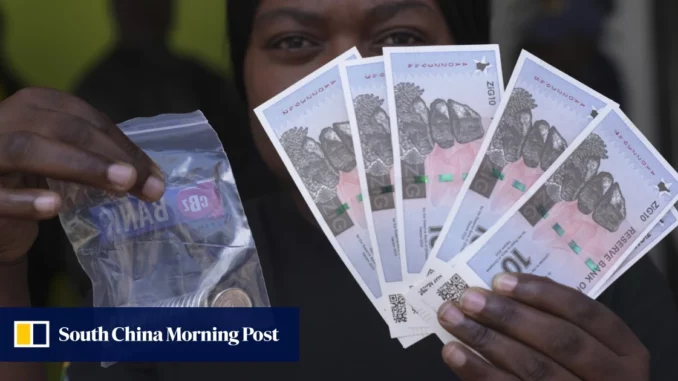
Zimbabwe rolled out a new currency on Tuesday to replace its heavily depreciated and frequently shunned predecessor, signaling another attempt to address its enduring currency crisis. The ZiG, initially introduced electronically in early April, now sees physical banknotes and coins in circulation. This initiative underscores the nation’s ongoing economic struggles, with past endeavors to stabilize the currency including proposals like gold coinage and digital currency exploration.
However, the ZiG’s introduction has been met with skepticism reminiscent of previous currency failures. This marks the sixth currency iteration since the catastrophic collapse of the Zimbabwe dollar in 2009, characterized by historic hyperinflation. Despite policy fluctuations, including the acceptance and subsequent banning of the U.S. dollar as legal tender, enduring stability remains elusive, with the U.S. dollar retaining favor among ordinary citizens.
The unveiling of ZiG banknotes has evoked caution among Zimbabweans. Many, like vegetable trader Kudzanayi Mande, are adopting a wait-and-see approach, preferring established currencies due to uncertainty about the new currency’s value. While some businesses continue to transact in U.S. dollars, others are mandated to exclusively accept ZiG, revealing inconsistencies in governmental directives and sparking suspicions about its viability.
Memories of past currency debacles, including scenes of hyperinflation and economic turmoil, persist in Zimbabwean memory. The enduring preference for the U.S. dollar underscores deep-seated doubts about the ZiG’s long-term stability. Despite government assurances backed by gold reserves, skepticism lingers, fueled by decades of economic uncertainty. As individuals cautiously engage with the new currency, skepticism prevails, reflecting a populace weary from years of financial turbulence.
